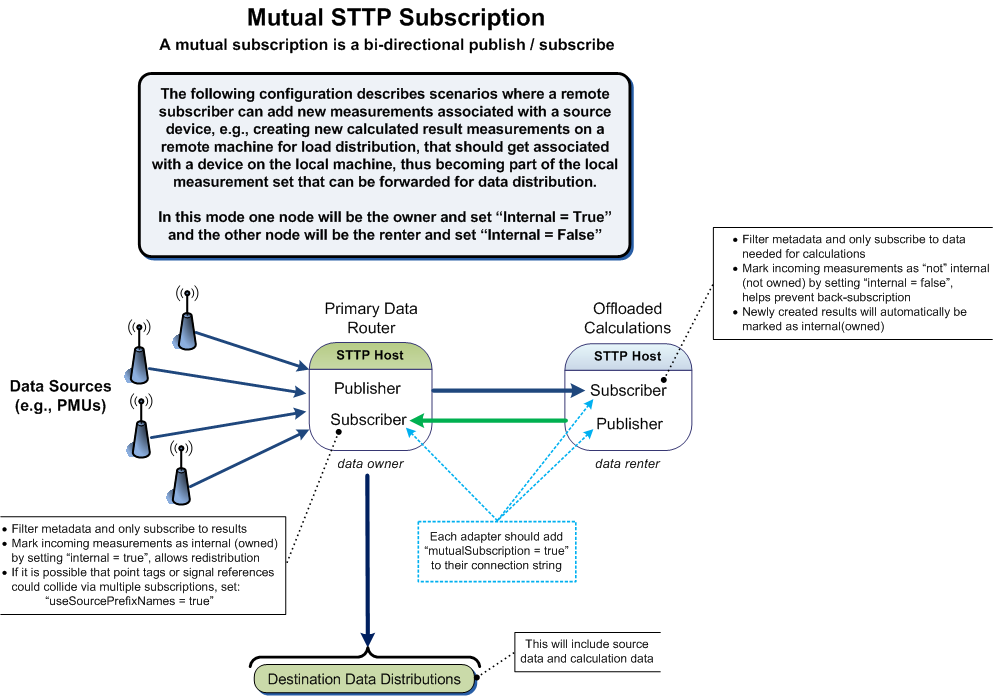Mutual Subscriptions
In STTP a common scenario exists where two parties mutually send and receive data. This bi-directional publish and subscribe operation is called a mutual subscription.
Typically a mutual subscription process includes the exchange of available metadata that each party has to offer, followed by a subscription to the desired data. Commonly the subscribing parties will “merge” the local and remote metadata datasets together creating a conflated set of all data available for redistribution to internal systems. The merge operation is made possible because metadata is uniquely keyed with UUID values. In a mutual subscription mode, it is always important to distinguish data received from a remote party from data that was collected internally, i.e., establishing the notion of data ownership.
Data Ownership
The default metadata set for measurements includes an Internal flag which is used to indicate ownership of a measurement. Setting this flag to true means that a measurement is safe for redistribution, whereas setting the flag to false means the measurement should not be included with metadata provided to other parties, i.e., it is intended for internal use only.
The most simple use case for metadata mergers is to simply set the Internal flag to false for any received metadata in a mutual subscription. Scenarios are easily imagined, however, where a central party may be responsible for data distribution to and from multiple parties, e.g., a hub and spoke approach to data distribution. In this scenario the hub would always set received metadata Internal flag to true, but the spokes would always set the Internal flag to false. In this hub and spoke approach, if data ownership is needed at the spoke to for easier internal redistribution, then a second subscription can be setup to receive all data from the spoke and mark the received data as owned.
Metadata merge operations that exist as part of a mutual subscription are simple enough as a concept, but actual implementations can often be more complex than they first appear, e.g., when the metadata merge process results are stored in a database. For example, metadata merge operations should always be careful to not overwrite existing metadata with received metadata that contains a UUID that is already locally owned. In such cases the remote party may have renamed the measurement for its own purposes and accidentally provided the measurement back, having taken ownership of the value.
Calculation Load Distribution
One common scenario exists where a system is receiving incoming values and calculating new results that become part of the local data set, i.e., the original measurements and the new calculated result measurements are combined together as a single dataset. If the calculation is particularly onerous, the calculation can be moved onto an independent machine where the original machine and the machine hosting the calculation can be setup in a mutual subscription so that the work of the calculation can be offloaded for CPU load distribution. In this scenario, as shown in Figure 1, the primary system is considered the data owner and the calculation system is considered the data renter.
Figure 1
